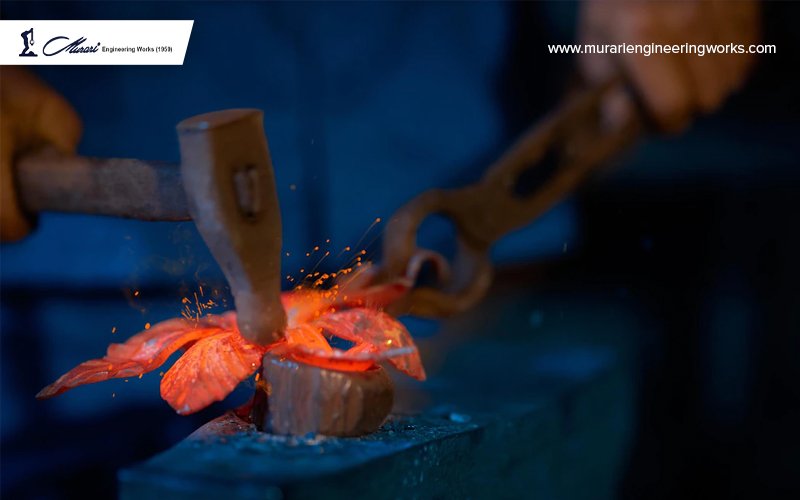What is Carbon Steel Forging?
Carbon steel forging is a metalworking process in which steel is heated to a temperature of over 930°F (500°C) and then pounded or pressed into the desired shape.
Carbon steel forging is beneficial to manufacture a wide variety of parts, from small components like hand tools to ship parts and construction equipment.
Benefits of Carbon Steel Forging
- High Strength levels and durability
The heat and pressure applied during the forging process work to align the grain structure of the steel, creating a material that is stronger and more resistant to stress and fatigue than other forms of steel. It is the perfect choice for components subjected to heavy loads or repeated use.
- Creating Complex Shapes and Intricate Details
The process allows for a high degree of precision, and the ability to create a wide range of shapes and sizes makes it a popular choice for numerous industries, including automotive, aerospace, and construction.
- Improved Resistance
Forged parts have a higher impact strength and are less likely to fail due to impact loads. Besides that, carbon steel forged parts have a more uniform grain structure and are less likely to wear down or fail due to wear compared to parts made using alternate methods.
- Cost-effectiveness
Carbon steel forging is the best cost-effective method specifically for high-volume production runs.
Challenges of Carbon Steel Forging
Carbon steel forging requires specialised equipment and trained personnel to perform the process. The high temperatures and pressures involved make it a potentially dangerous process. Carbon Steel forging requires specialised tools and techniques that are unsuitable for all types of steel or applications.
Types of Carbon Steel Forging
There are several different carbon steel forging processes, each with its own set of advantages and limitations. These include:
- Closed die forging
In this process, two or more dies enclose the metal piece and exert pressure to shape the metal. The space for the metal piece is called a die cavity, and the dies are closed around it.
- Open die forging
Flat dies are used to shape the metal by applying pressure to the metal piece from above and below. The metal is placed on the bottom die, and the top die is brought down onto it, applying pressure to shape the metal.
- Roll forging
Instead of dies, this process involves the use of two or more rolls. The rolls apply pressure and shape the metal piece. The metal is placed between the rolls, and the rolls are rotated, applying pressure to shape the metal.
Concluding
Carbon steel forging has many advantages over other metalworking processes, including the potential to create strong and durable parts with complex shapes and intricate details.
It is crucial to carefully consider the specific needs of a project before deciding if carbon steel forging is the right choice. Murari Engineering Works helps you make the right forging decision suitable to your industry. We have been in the forging industry since 1959 and have had many happy and satisfied clients.

